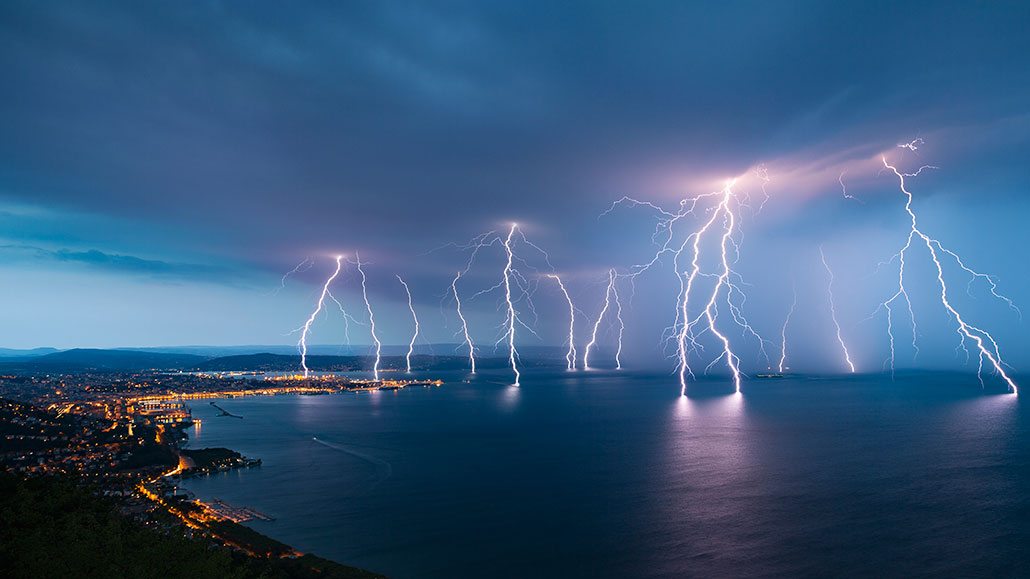Let’s learn about lightning
These bolts are beautiful — and deadly

Lightning (seen here in Trieste, Italy) can be beautiful, but it can also be deadly.
Jurkos/iStock/Getty Images Plus
Around 100 times a second, every hour of every day, lightning strikes somewhere on Earth. It might strike over the ocean, far from where anyone might see it. It might hit the beach, perhaps forming a beautiful deposit of fulgurite. It might strike a tree, setting off a wildfire. And on rare occasions, it might hit a person, injuring or even killing them.
In fact, some 24,000 people are killed each year by lightning. This is why you should seek cover any time there’s a thunderstorm in the area. Even if the storm doesn’t appear close, you might still get struck.
Lightning comes in many forms. There are the big bolts from cloud to the ground, of course, but also plenty that travel between clouds in the sky. There’s also blue jets, red sprites and ball lightning. (There’s also lightning in space: Jupiter has its own light shows of “sprites” and “elves.”)
While most lightning appears and disappears in a flash, some can last longer. An extreme bolt over Argentina on March 4, 2019 lasted 16.73 seconds, setting a record. And while lightning can form anywhere, scientists have mapped where the biggest bolts tend to strike — Europe is one hot spot.
And while lightning can do a lot of damage, it’s not all bad. Scientists have reported these bolts can forge atmosphere-cleaning chemicals called oxidants. Those chemicals help pollutants rain out of the sky. And that’s especially good since climate change is expected to bring us more of those big bolts.
Want to know more? We’ve got some stories to get you started:
Here’s how lightning may help clean the air Airplane observations show that storm clouds can generate huge quantities of air-cleansing chemicals known as oxidants. (5/18/2021) Readability: 6.8
Space station sensors saw how weird ‘blue jet’ lightning forms A mysterious type of lightning in the upper atmosphere has been traced to a brief, bright flash of light at the top of a storm cloud. (2/2/2021) Readability: 7.4
Where will lightning strike? When lightning strikes, the results can be deadly. But nature’s dazzling light show also can provide scientists with insights into when and where the next thunderbolt might strike. (9/16/2014) Readability: 7.0

Educators and Parents, Sign Up for The Cheat Sheet
Weekly updates to help you use Science News Explores in the learning environment
Thank you for signing up!
There was a problem signing you up.
Explore more
Explainer: What is thundersnow?
Hotspots found for lightning’s superbolts
Lightning strikes will surge with climate change
Lightning megaflashes set big new distance and duration records
Activities
Learn more about how lightning forms and see how much you can create with this game from SciJinks, a site all about the weather from NASA and the National Oceanic and Atmospheric Administration.







